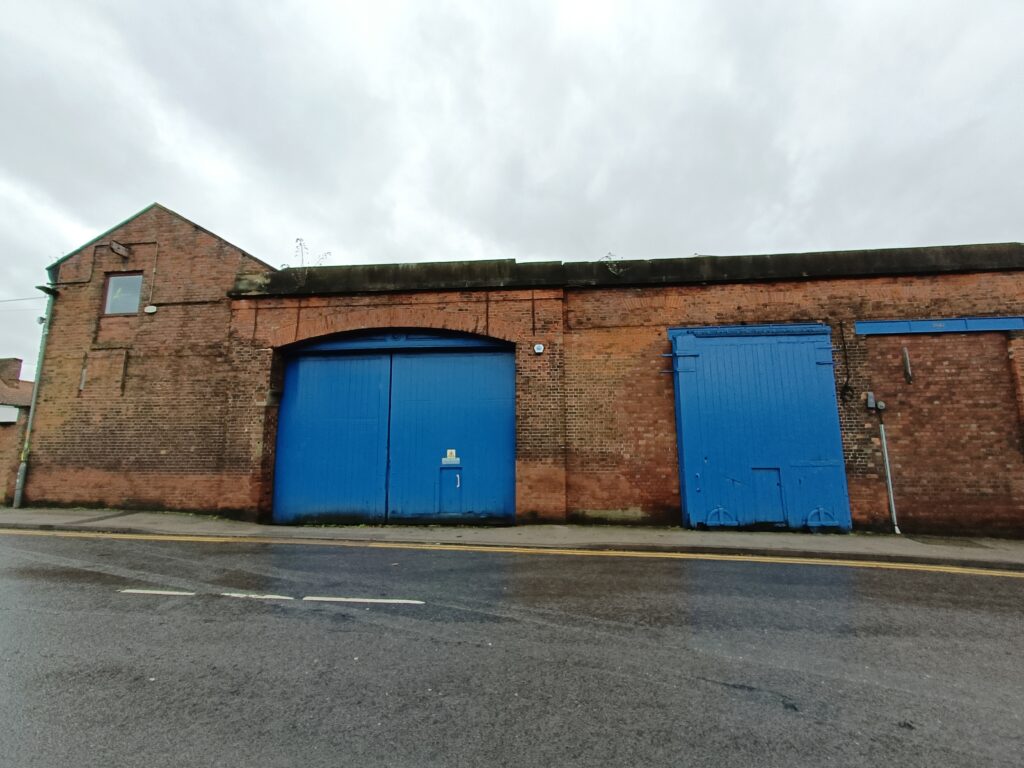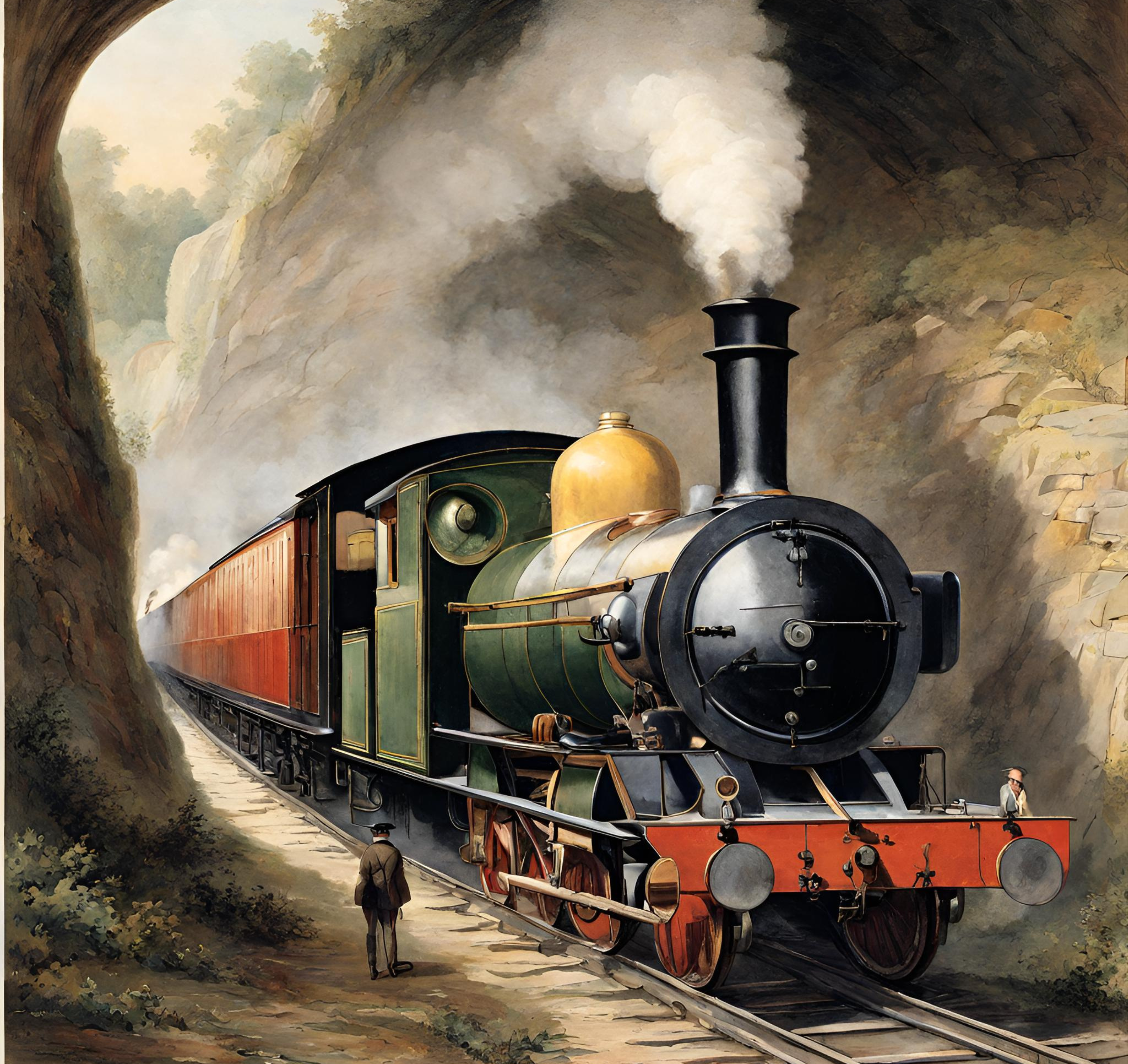The Leeds and Selby Railway opened in 1834 becoming the first mainline railway in Yorkshire. In this Not-So-Romantic Blog, we explore the railway’s origins.
Table of Contents
The Backstory
Before diving into the trains, let’s look deeper at Leeds and Selby, you know get the background story so we know the places we’re dealing with a little bit more.
Leeds grew from the previously heavily forested area of Elmet which had been part of a Celtic Kingdom back when the country was split into smaller kingdoms, rather than being a united country.
Whilst it’s difficult to pinpoint the exact start of any livable settlement in the area, we know for sure people were living there in 1066 when the Normans arrived.
Leeds was a Royalist base during the English Civil War but the bit we’re especially interested in for this Not-So-Romantic Blog is the industrial growth Leeds saw at the start of the Industrial Revolution.
Thanks to the wool industry – which had been floating around the area in various guises since the Middle Ages- a lot of wealth came to the area. Workers also flocked to work in the rapidly increasing number of factories meaning that by 1840 there were 150,000 living there. Thanks to booming business, trade and population Leeds was granted city status in 1893.
This isn’t the “history of Leeds” blog so let’s leave it there and travel eastward to Selby.
Selby’s origins are as a small Viking settlement. Notable King Henry 1 was born in Selby whilst his father – William the Conquer- was harrowing the North for not bending to his rule. The highlight feature of Selby is Selby Abbey which stands watch over the town centre.

Along with having a popular market Selby’s history is filled with shipbuilding and being a major passing for cargo ships on their route to the sea at Hull. Along with the shipbuilding, there were the six mines which made up the Selby coal fields- these coalfields added to Selby’s popularity with surrounding cities during the Industrial Revolution.
Oh, and if you want to find out more about Selby’s involvement in the Civil War then check out this blog. Did I just mention the Civil War to promote a different blog? Yes… yes, I did.
Why a railway?
So, why was a railway line between Leeds and Selby built? Some of it will have had something to do with Selby’s access to coal and Leeds wanting to take advantage of cheap coal for its growing number of factories.
But what Leeds really wanted was a connection with Hull- and a Selby connection was needed to make that happen. Getting goods from Leeds to the port at Hull was slow as the only way to get there was via the River Aire (which is just an unusual spelling in my opinion). Do you want to know what’s quicker than a river cruise? A railway cruise.
This is shown in a letter sent to a newspaper called the Leeds Mercury. We don’t know who wrote the letter or responded but some think John Blenkinsop was involved.
To clarify John Blenkinsop was heavily involved in the Middleton Railway and I talk about him in my book, The Not-So-Romantic Railways: How a Steam Locomotive Works which you should all go and buy right now… I forbid you from reading on until you’ve been and bought the book.
I hope you’ve bought the book- I’d hate to think you were breaking the rules by reading this before you have.
So really why was a railway built between Leeds and Selby? Mostly because Leeds wanted a railway line to Hull, and Selby kind of got in the way. It was like a strange version of the bear hunt story… or is it a song?
We can’t go over it, we can’t go under it, we can’t go around it… we’ll have to go through it.
The building of the line
Even before railways were even talked about there had been a plan in the 1750s to connect Leeds and Selby via a canal to get to Hull quicker but this plan was quickly put out of action due to arguing rivals. A plan to connect the two locations resurfaced in the form of a railway in 1814.
As a side note, I wonder how many railways started as ideas for canals. Someone with more free time than me will need to do the research and let me know the stats! I can think of at least five off the top of my head.
George Stephenson (he seems to get everywhere) surveyed the proposed route between Leeds and Hull and suggested using some rope haulage in certain areas. For context, rope haulage is where a rope or cable pulls the trucks or carriages. These could be pulled by a horse, by a stationary steam engine or even in a funicular method where one carriage is at the top of the slope and as it comes down it pulls another one up the slope on a parallel track.
Just like George Stepenson’s original plans for the Liverpool & Manchester Railway, his plan for the Leeds to Hull railway got very little support and the idea was put on hold.
New plans came to light in 1829 with all talk of horses and rope haulage gone – replaced by steam locomotives. But spiralling costs were counting against the plan so by the time it got parliamentary approval in 1830 the line had been shortened to go between Leeds and Selby – hence why it’s called the Leeds and Selby railway.
The railway was to be 20 miles long (10 miles shorter than any canal) and was surveyed by James Walker. The route was approved fairly quickly – but mostly because the land was pretty much all owned by the four directors of the railway company.
Originally there was only going to be one track with three passing places. But, in a strange occasion of forward-thinking, enough land was bought and infrastructure, such as bridges, was built to fit in four tracks eventually down the line, which I think is a train pun… let’s all laugh together.
Construction started in September 1830, but labour shortages caused some issues as the railway navvies preferred the better-paid farm jobs and sourcing enough stone for the railway was proving somewhat problematic. On top of these smaller problems, the construction of the Marsh Lane tunnel was claiming too many lives which must have put people off working on the railway lines construction.
The stations
A new railway means new stations and in Leeds a station was built on Marsh Lane and became known as the Marsh Lane station – clever name right? This station closed in 1958. But it was pretty fancy in its day. It had a booking office, a regular office, a locomotive shed and even a roof!
There was also a railway station built in Selby at the eye-watering cost of £10,000. This station is no longer in use but here’s a picture of the original location – just down from where Selby railway station is today. As you can tell- it didn’t get designed much beyond looking like a warehouse building. But it did have six tracks – two for freight and four for passenger trains.

This original station was only used until 1840 when the new station opened and was converted into a storage and goods warehouse for the Hull and Selby Railway.
I think I should have mentioned this sooner but the two stations weren’t fully complete until a few months after the railway line had opened. In hindsight, that would have been a good thing to start this section with… my bad.
The grand opening
The Leeds to Selby Railway opened on the 22nd of September 1834 with 20,000 people turning out for the inaugural train, hauled by a steam locomotive called Nelson, leaving Leeds Marsh Station at 6.30 am. Only one track was complete… but that counts as being open.
Sounds like a pretty picture right? It didn’t all go quite as smoothly as the organisers would have liked. As Nelson approached the Marsh Lane tunnel the previous night’s heavy rain had made the track extremely slippery. This meant instead of a graceful entrance to the tunnel, Nelson got stuck with some horrible wheel spin and couldn’t get up the slight incline.
The fireman used some quick thinking and laid some hot ash from the firebox across the tracks so the wheels had something to grip. Despite this, it took Nelson over an hour to reach Manston… which is still in Leeds. The crowd apparently laughed and made fun of the new railway thing.
Nelson’s fortune did pick up after that and they reached Selby around 9 am. They stayed in Selby for a couple of hours before returning to Leeds at a far better journey time of 76 minutes. By this time the late risers had finally dragged themselves out of bed and around 40,000 people awaited the train’s return.
Legacy
On the opening of the Leeds and Selby railway passengers between the two places increased from an average of 400 who had travelled via stagecoach to almost 4000 on the railway. I’m no mathematician but that’s a passenger increase of 900%.
In 1840 it was connected properly to the Hull and Selby Railway and the York & North Midland Railway – you can read more about the York & North Midland Railway in this blog. You can also read about it in my book, The Not-So-Romantic Railways: The Railway King.
Speaking of the Railway King after his fall from grace the Leeds to Selby Railway became part of the new North Eastern Railway and eventually moved to the London North Eastern Railway in the grouping of 1923.
Still today the line between Leeds and Selby is run and very popular.
What to read next?
Thank you so much for reading this Not-So-Romantic Blog, I hope you’ve enjoyed it. If you have then here are some other blogs along a similar theme which I think you would also enjoy.
Thanks once again for reading this Not-So-Romantic Blog – I hope to see you here again very soon.
